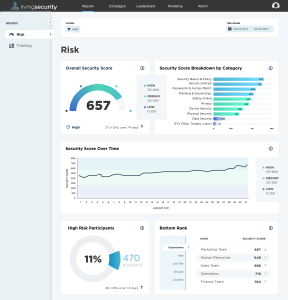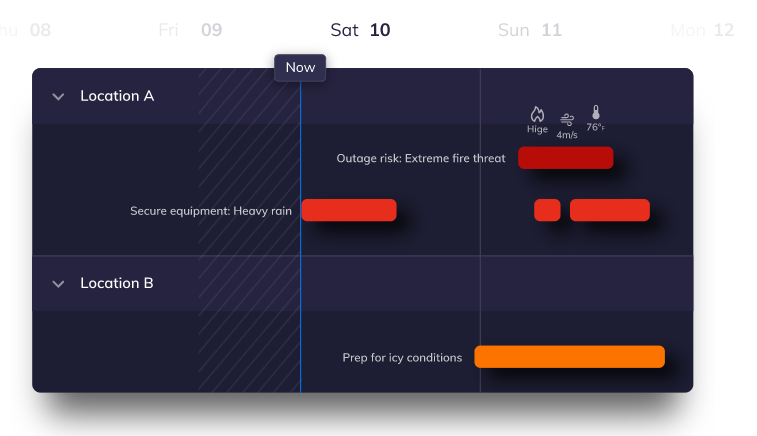As more companies become ever more reliant on digital infrastructure for everyday work, the more they become major targets for malicious hackers — both trends accelerated by the pandemic — and that is leading to an ever-greater need for IT and security departments to find ways of protecting data should it become compromised. Today, one of the companies that has emerged as a strong player in data backup and recovery is announcing its first major round of funding.
HYCU, which provides multi-cloud backup and recovery services for mid-market and enterprise customers, has raised $87.5 million, a Series A that it the Boston-based startup will be using to invest in building out its platform further, to bring its services into more markets, and to hire 100 more people.
HYCU’s premise and ambition, CEO and founder Simon Taylor said in an interview, is to provide backup and storage services that are as simple to use “as backing up in iCloud for consumers.”
“If you look at primary storage, it’s become very SaaS-ifed, with no professional services required,” he continued. “But backup has stayed very legacy. It’s still mostly focused on one specific environment and can’t perform well when multi-cloud is being used.”
And HYCU’s name fits with that ethos. It is pronounced “haiku”, which Taylor told me refers not just to that Japanese poetic form that looks simple but hides a lot of meaning, but also “hybrid cloud uptime.”
The company is probably known best for its integration with Nutanix, but has over time expanded to serve enterprises building and operating IT and apps over VMware, Google Cloud, Azure and AWS. The company also has built a tool to help migrate data for enterprises, HYCU Protégé, which will also be expanded.
The funding is being led by Bain Capital Ventures, with participation also from Acrew Capital (which was also in the news last week as an investor in the $118 million round for Pie Insurance). The valuation is not being disclosed.
This is the first major outside funding that the company has announced since being founded in 2018, but in that time it has grown into a sizeable competitor against others like Rubrik, Veeam, Veritas and CommVault. The Rubrik comparison is interesting, given that it is also backed by Bain (which led a $261 million round in Rubrik in 2019). HYCU now has more than 2,000 customers in 75 countries. Taylor says that not taking funding while growing into what it has become meant that it was “listening and closer to the needs of our customers,” rather than spending more time paying attention to what investors says.
Now that it’s reached a certain scale, though, things appear to be shifting and there will probably be more money down the line. “This is just round one for us,” Taylor said.
He added that this funding came in the wake of a lot of inbound interest that included not just the usual range of VCs and private equity firms that are getting more involved in VC, but also, it turns out, SPACs, which as they grow in number, seem to be exploring what kinds and stages of companies they tap with their quick finance-and-go-public model.
And although HYCU hadn’t been proactively pitching investors for funding, it would have been on their radars. In fact, Bain is a major backer of Nutanix, putting some $750 million into the company last August. There is some strategic sense in supporting businesses that figure strongly in the infrastructure of your other portfolio companies.
There is another important reason for HYCU raising capital to expand beyond what its balance sheet could provide to fuel growth: HYCU’s would-be competition is itself going through a moment of investment and expansion. For example, Veeam, which was acquired by Insight last January for $5 billion, then proceeded to acquire Kasten to move into serving enterprises that used Kubernetes-native workloads across on-premises and cloud environments. And Rubrik last year acquired Igneous to bring management of unstructured data into its purview. And it’s not a given that just because this is a sector seeing a lot of demand, that it’s all smooth sailing. Igneous was on the rocks at the time of its deal, and Rubrik itself had a data leak in 2019, highlighting that even those who are expert in protecting data can run up against problems.
Taylor notes that ransomware indeed remains a very persistent problem for its customers — reflecting what others in the security world have observed — and its approach for now is to remain focused on how it delivers services in an agent-less environment. “We integrate into the platform,” he said. “That is incredibly important. It means that you can be up and running immediately, with no need for professional services to do the integrating, and we also make it a lot harder for criminals because of this.”
Longer term, it will keep its focus on backup and recovery with no immediate plans to move into adjacent areas though such as more security services or other tools. “We’re not trying to be a Veritas and own the entire business end-to-end,” Taylor said. “The goal is to make sure the IT department has visibility and the cloud journey is protected.”
Enrique Salem, a partner at Bain Capital Ventures and the former CEO of Symantec, is joining HYCU’s board with this round and sees the opportunity in the market for a product like HYCU’s.
“We are in the early days of a multi-decade shift to the public cloud, but existing on-premises backup vendors are poorly equipped to enable this transition, creating tremendous opportunity for a new category of cloud-native backup providers,” he said in a statement. “As one of the early players in multi-cloud backup as a service bringing true SaaS to both on-premises and cloud-native environments, HYCU is a clear leader in a space that will continue to create large multi-billion dollar companies.”
Stefan Cohen, a principal at Bain Capital Ventures, will also be joining the board.

Powered by WPeMatico


 You can detect the theme.
You can detect the theme.




